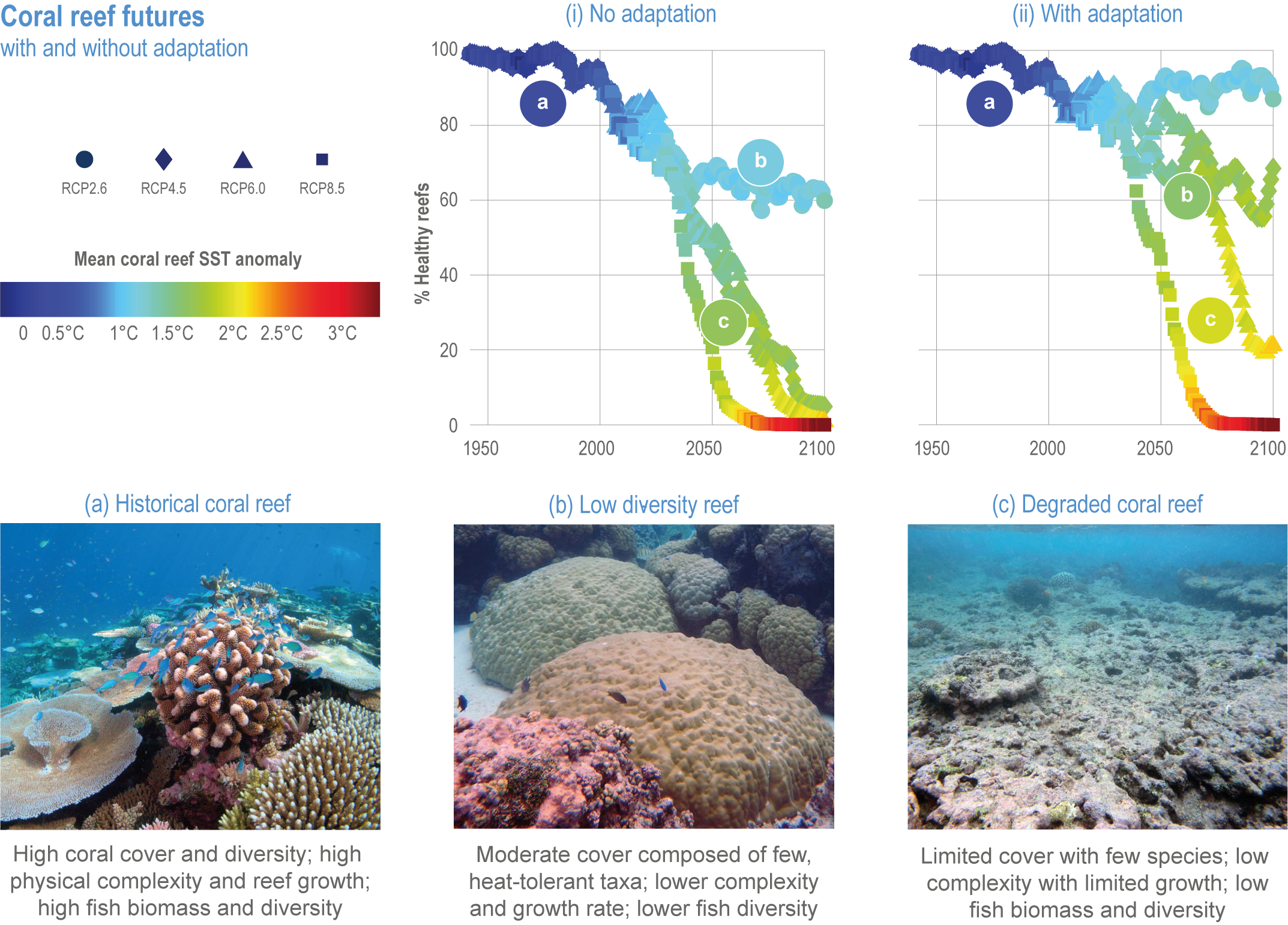Figure 3.13
Figure caption
Figure 3.13 | Coral reef futures, with and without adaptation. Graphs are based on a model of coral-symbiont evolutionary dynamics from Logan et al. (2021), which simulates two coral types and symbiont populations for 1925 reef cells worldwide, from 1950 to 2100 drawn from simulations with National Oceanic and Atmospheric Administration–Geophysical Fluid Dynamics Laboratory Earth System Model (ESM2M) under four RCPs. Top panels show the simulated fraction of cells with healthy reefs, when both coral types are not in a state of severe bleaching or mortality, (i) without adaptive responses and (ii) with adaptive responses (symbiont evolution). Colours indicate maximum monthly sea surface temperature increase across all reef cells, versus a 1861–2010 baseline. Panels (a,b,c) depict snapshots of coral reef conditions at time points in the future, each with different levels of warming, drawn from the model-projected cover of the two coral types and from a literature assessment (Section 3.4.2.1; Hughes et al., 2018b; Bindoff et al., 2019a; Darling et al., 2019; Leggat et al., 2019; Cornwall et al., 2021).
